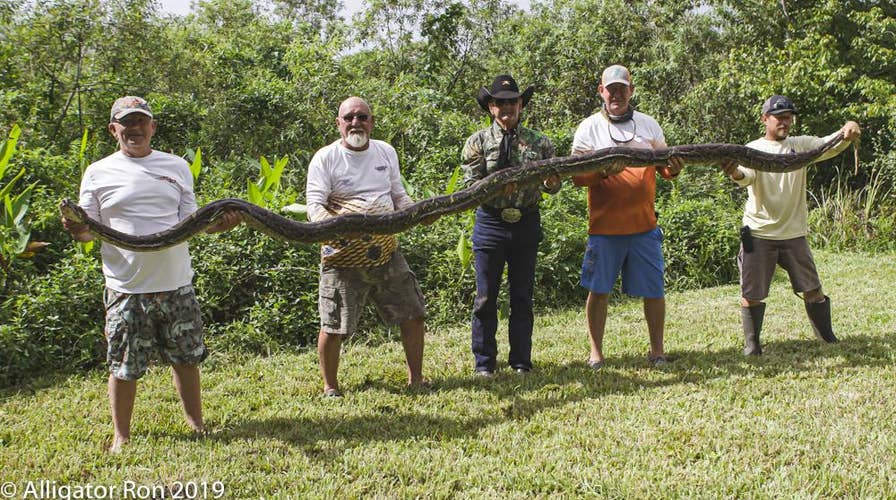Massive 16-foot python removed from Florida Everglades
Massive 16-foot python with dozens of eggs in its nest was removed from Florida Everglades.
Invasive species threaten to lay waste delicate ecosystems and native wildlife across the United States, with insatiable appetites as they sit atop the food chain and breed unchallenged.
These species all came to America in different ways: Some were imported as pets or hunting fodder, while others were introduced in ill-conceived bids to help the environment.
10 DIFFERENT KINDS OF BEAR: EVERYTHING YOU NEED TO KNOW ABOUT THE HUGE MAMMALS
Now, these destructive species are running amok as government and environmental officials race to tip the scales back to their natural balance – if it’s not too late.
With Asia's "murder hornet," an aggressive insect capable of wiping out entire bee colonies, landing in the U.S. for first time late last year, here are five other invasive species to know:
Burmese python
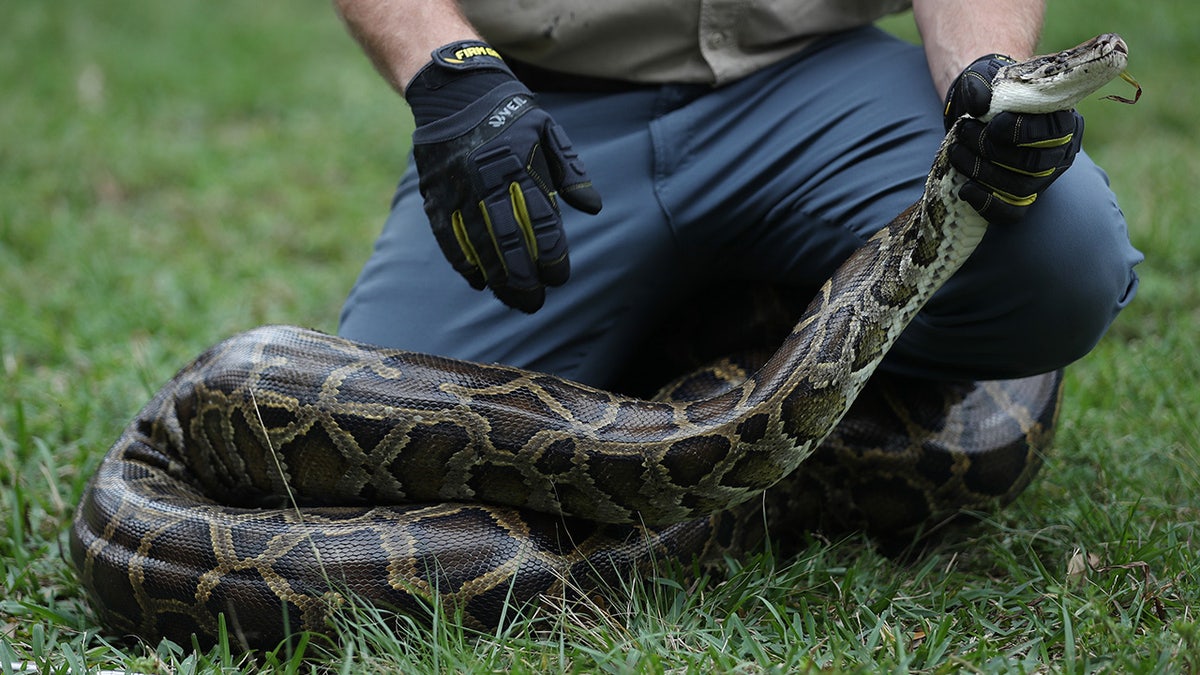
The Burmese python has no natural predators in Southern Florida, allowing it to reproduce rapidly and decimate local wildlife populations. (Photo by Joe Raedle/Getty Images)
The Burmese python has long devastated the delicate ecosystem of Southern Florida, most dramatically in the Everglades and Big Cypress National Preserve. The serpent feeds on mammals, birds and other reptiles, taking away those food sources from native wildlife like panthers, bobcats and alligators.
Native to Southeast Asia, the Burmese python is one of the largest snakes in the world, growing to over 20 feet long. Females lay clutches of up to 100 eggs once per year in May or June, and incubate them until they’re ready to hatch in July or August, according to the University of Florida.
More on Florida's Burmese python
The snake began appearing in the Everglades more than 20 years ago when the reptiles were imported as pets, according to the U.S. Department of Agriculture (USDA). Some snakes were intentionally released while others escaped. Wildlife officials estimate the Burmese python population may exceed 100,000.
As the species is spread across more than a thousand square miles of Southern Florida, the United States Geological Survey says the odds of completely eradicating the species is low.
Recent efforts to remove the invasive snake have been buoyed by a massive influx of funding approved by Republican Gov. Ron DeSantis of Florida.
Asian carp

The name Asian carp is a catchall term referring to four different invasive species — bighead, black, grass and silver carp. A Black carp is pictured above. (USDA)
Deemed the enemies of America’s waterways, Asian carp threaten to upend aquatic ecosystems, starve out native fish and wipe out endangered mussel and snail populations along dozens of tributaries, including the Mississippi River, and could devastate a $7 billion fishing industry in the Great Lakes.
Asian carp were imported to the U.S. in the 1960s and 1970s as an eco-friendly alternative to poisons for ridding southern fish farms and sewage lagoons of algae, weeds and parasites. They escaped through flooding, deliberate stocking and other means.

The four species of Asian carp are widely distributed throughout the U.S.
There are no precise estimates of Asian carp populations in U.S. waters, but there are believed to be millions. They grow quickly and reproduce abundantly, with females laying up to 5 million eggs at a time.
State and federal agencies together have spent roughly $607 million to stop them since 2004, according to data compiled by The Associated Press. As costs are expected to hit about $1.5 billion over the next decade, wildlife officials concede they may never be able to eradicate the prolific fish.
Feral hog
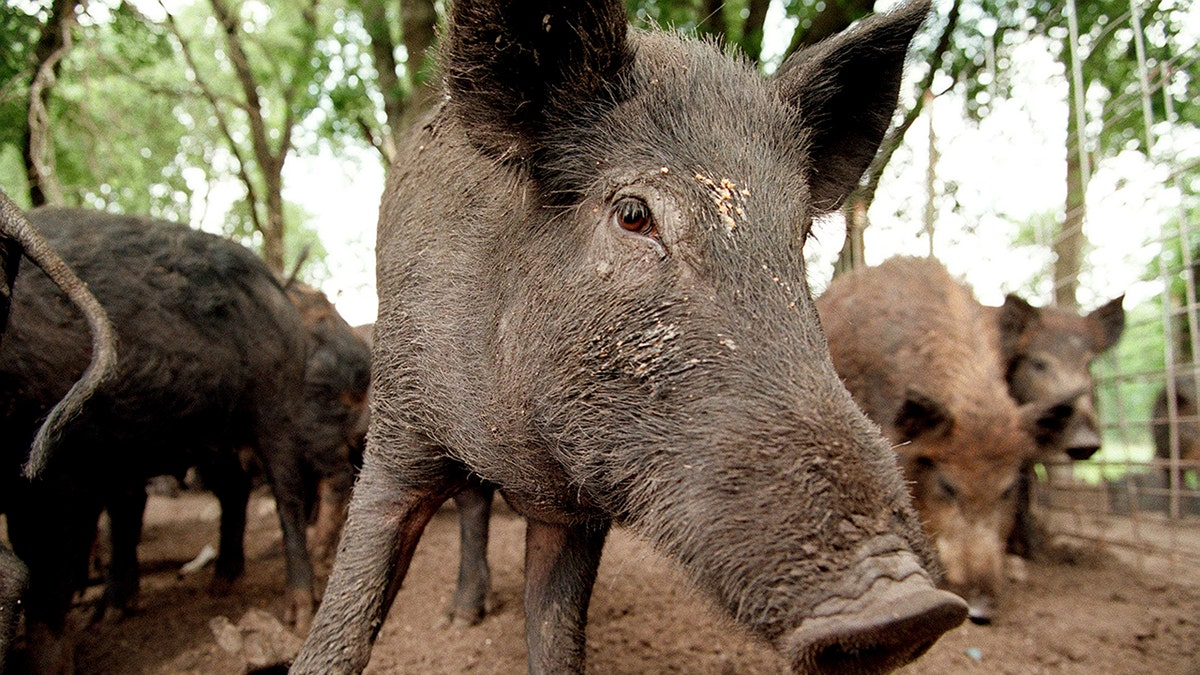
Feral hogs cause an estimated $1.5 billion in damages each year. (Photo by Rodger Mallison/Fort Worth Star-Telegram/Tribune News Service via Getty Images)
Feral hogs, nicknamed the “rototillers” of nature, have used their long snouts and tusks to dig and root their way across at least 35 states in search of food, according to the USDA.
The wild pigs devour crops, destroy the environment, and sometimes prey upon animal eggs, small mammals and reptiles, according to Mississippi State University (MSU).
European settlers first brought wild pigs to the U.S. in the 1500s as a food source, MSU said. In the 1900s, the Russian Wild Boar was introduced for hunting.
More on feral hogs
The expansion of feral swine across the U.S. resulted largely from the animals escaping from hunting preserves and the illegal practice of capturing wild pigs and relocating them, according to the university.
With a population of more than five million in the U.S., the invasive species has caused an estimated $1.5 billion in damages each year, according to the USDA.
In February, Colorado Parks and Wildlife announced the eradication of feral swine from the state after a 15-year effort. In June 2019, the USDA announced $75 million in funding for the eradication and control of feral swine in select areas of Alabama, Arkansas, Florida, Georgia, Louisiana, Mississippi, North Carolina, Oklahoma, South Carolina and Texas.
Asian citrus psyllid

An Asian Citrus Psyllid adult on a lemon leaf. (Center for Invasive Species Research, UC Riverside)
The Asian citrus psyllid (ACP) is a small flying insect that feeds on the sap of citrus plants, such as oranges and lemons. The insects can spread a deadly plant disease that destroys citrus production and is crippling the citrus industries in California and Florida.
Native to Southern Asia, the first ACP was found in Florida in 1998, according to the USDA. It is believed the pests arrived on imported plants.
As the insects feed on the plants, they can spread Huanglongbing (HLB), a bacterial infection known as citrus greening disease, which causes the plants to produce inedible fruit that is green, misshapen and bitter, according to the University of California.

Citrus affected by "greening," an insect-borne bacterial disease is shown in a malformed star ruby grapefruit in a grove in Vero Beach, Florida. (REUTERS/Joe Skipper)
The disease kills infected plants or trees within five years; plants that test positive for the disease must be removed, the university said. There is currently no cure for the disease.
Africanized honey bee
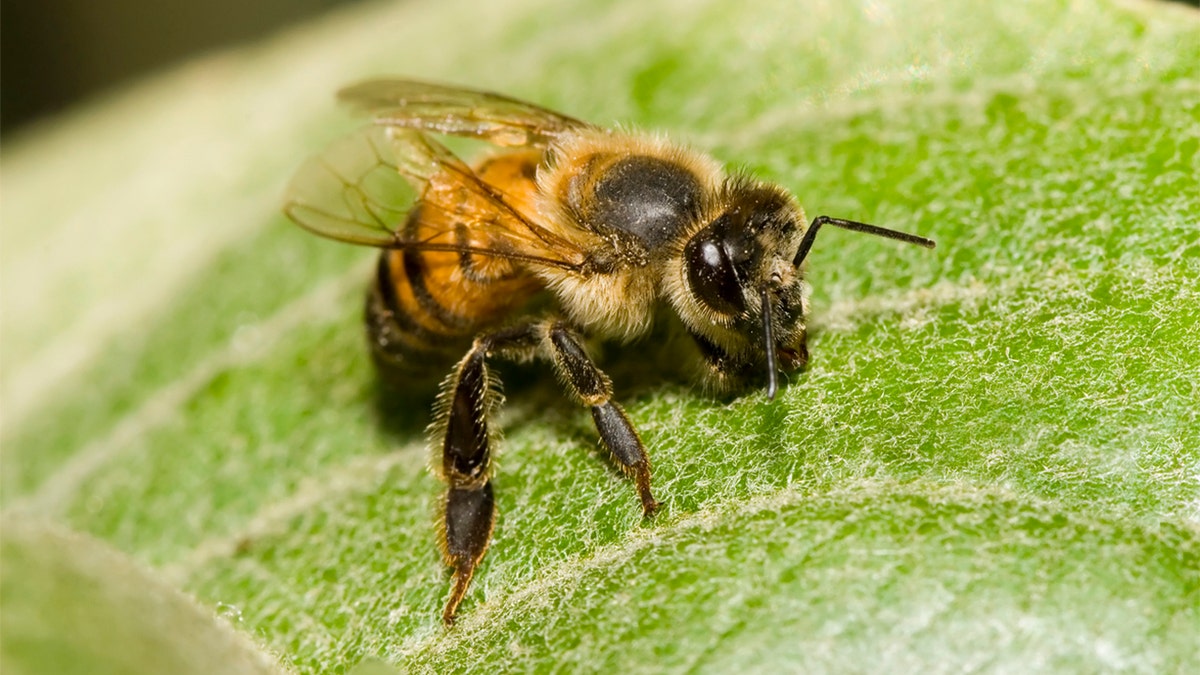
The Africanized honey bee is far more aggressive than the European honey bee.
The Africanized honey bee, also known as the infamous “killer” bee, is a potentially life-threatening invasive species. Single swarms consist of tens of thousands of bees. Disturbing their nests can prove fatal for both humans and animals.
African honey bees were imported to Brazil in the late 1950s and bred with European honey bees to increase honey production, according to federal and state departments of agriculture.
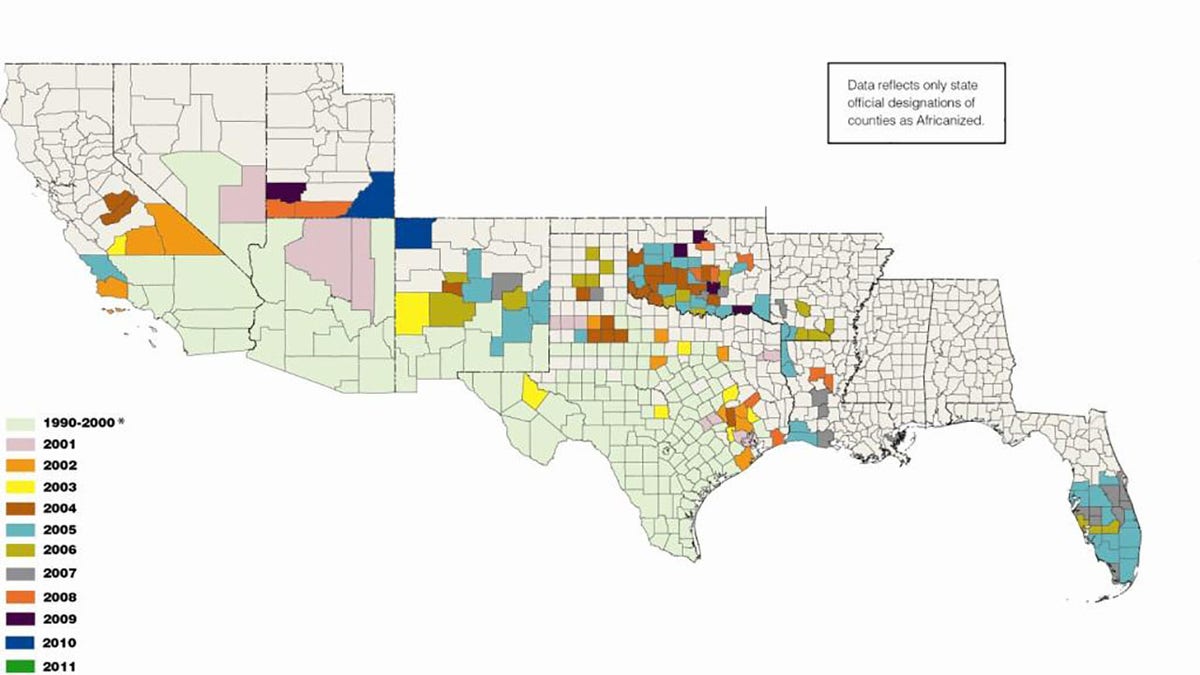
The distribution of the Africanized honey bee across the southern U.S. as of 2011. (USDA)
In 1957, 26 African queen bees escaped and the Africanized hybrid rapidly spread throughout South and Central America. The insects reached Texas in 1990, before spreading to other states like Arizona and California.
More on Africanized honey bees
If disturbed, the Africanized bees will attack intruders with hundreds of bees, while European honey bees tend to send only 10 to 20 defenders. The bees can chase intruders for up to a quarter of a mile, according to the Smithsonian Institute.
One way beekeepers try to control the spread of Africanized honey bees is a method called “requeening,” in which the queen of a colony is regularly replaced to ensure it is of the European species, according to North Carolina State University.
The Associated Press contributed to this report.




















